This entry includes a walking tour! Take the tour.
Introduction
Text-to-speech Audio
Images
Postcard of Waddington Farm.
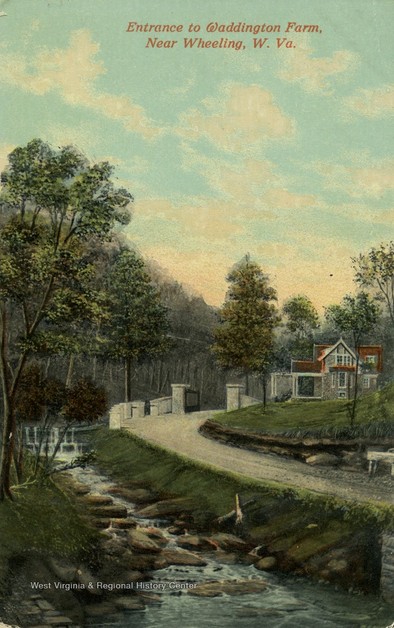
An etching of Waddington Farm from 1879.
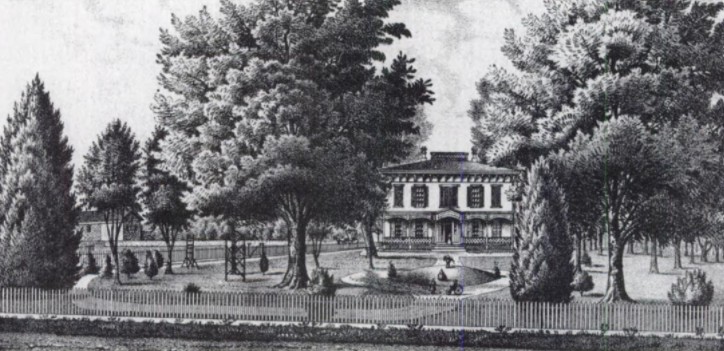
Pergola with grape vines at Waddington Farm.
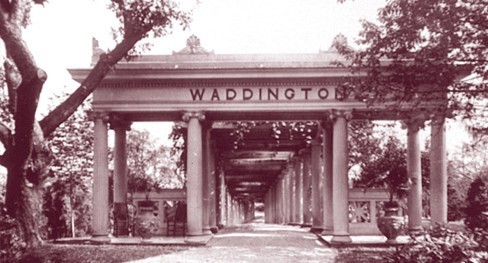
An agricultural building at Waddington Farm.
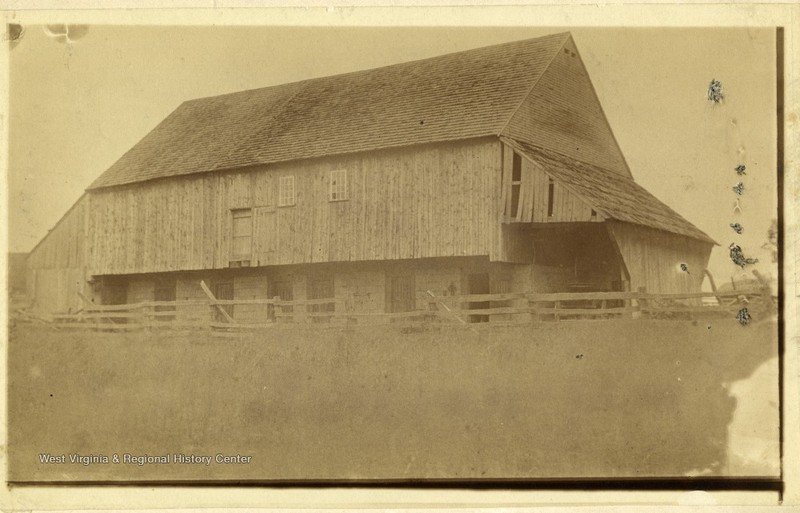
From left to right, Sallie Howell Oglebay, Earl W. Oglebay, and Sarita Oglebay Burton Russel.
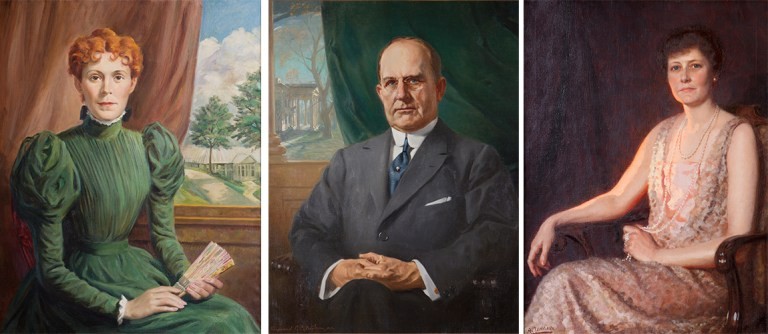
Earl W. Oglebay on an inspection of the farm.
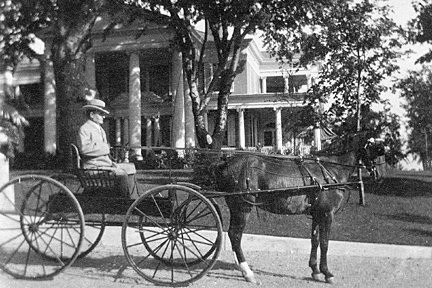
An image of Waddington Farm under Oglebay’s tenure. Crops grow on the hills and a now demolished water tower is visible in the background.
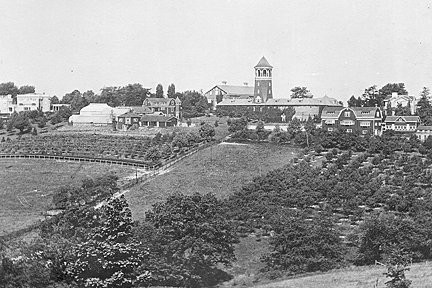
Postcard of a garden in the park.
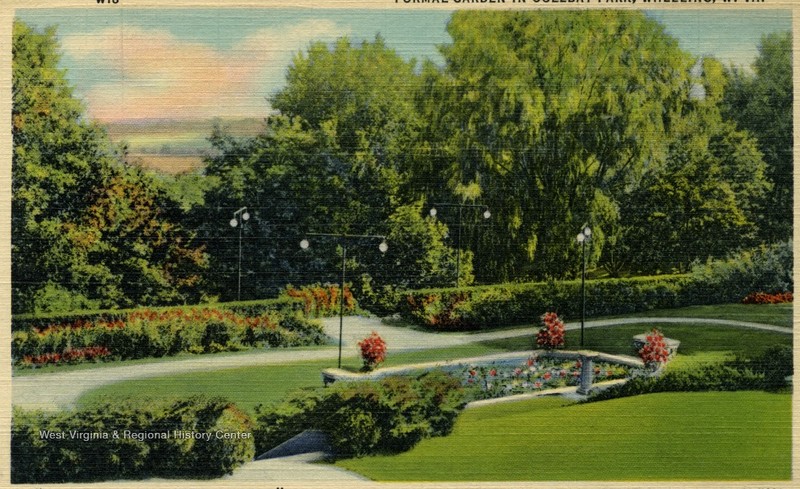
Backstory and Context
Text-to-speech Audio
The story of Oglebay Park begins with Silas Zane and Zachariah Sprigg, both of whom settled in the area in the late 1700s. Zane owned a tract of land consisting of approximately four hundred acres which was granted to him by the government of Virginia. However, Sprigg never officially owned his roughly nine hundred acre plot. Zachariah Sprigg’s son, Samuel Sprigg, was the first legally recorded landowner of the Sprigg land. Zane’s four hundred acres remained in the family until 1812, when the property was purchased by Noah Linsly. Noah Linsly established a school, which eventually became the still operational Linsly School. Samuel Sprigg later purchased Linsly’s property from him and used the land for sheep grazing. When Samuel Sprigg died in 1843, he left parcels of the land to his three daughters. One daughter, Elizabeth Sprigg, inherited 415 acres of the original approximately 900 acres of land.
Immediately after receiving her inheritance, Elizabeth Sprigg became engaged to Wheeling doctor Hanson W. Chapline. The property was deeded to Chapline and the couple began construction on a new house. Under the Chaplines’ ownership, the area was called Hill Farm. However, the couple’s tenure was short-lived and Hill Farm permanently left Sprigg ownership in 1856. George W. Smith, a wealthy brewer, moved from Pittsburgh to Wheeling and purchased the property and house. Smith paid $30,000 in the transaction — approximately $900,000 adjusted for inflation. The brewer expanded the house, improved the grounds, and raised horses. He also changed the name of the estate from Hill Farm to Waddington Farm, a nod to his family’s home in Waddington Heath, United Kingdom. Like the Chaplines, Smith’s occupation of the land was short-lived. Smith went bankrupt in 1864 and the estate entered receivership for almost a decade. During this period, almost all the land was sold in various parcel sizes, though the house remained standing.
In 1872, James W. Paxton purchased the house and twenty-five acres of land — all that remained of the original 900 acres. Paxton had served in the new West Virginia government during the Civil War and was an adamant Union supporter. Paxton occupied Waddington Farm until 1878, when he sold the estate. From 1878 until 1900, Waddington Farm changed hands three times. The last of these three owners was A. Allen Howell. Howell’s daughter, Sallie Howell, married Earl W. Oglebay, an iron mining and banking magnate. In 1900, Oglebay purchased the Waddington estate due to his personal interest in agricultural technology.
When Oglebay acquired Waddington Farm, it consisted of just twenty-five acres. Between 1901 and 1905, Oglebay reacquired all of the land sold under Smith’s ownership and additional area on top of this. By 1905, Waddington Farm encompassed seven hundred fifty acres. Oglebay directed major landscaping projects, house additions, and the construction of over sixty new buildings. The farm became an agricultural mecca where farmers could learn about technological advancements and scientific improvements. Oglebay was intimately involved with running the farm, once remarking, “The master of the land lives by the land and he gives the land and he gives the land the same attention Americans give to banks, stores, mines, and factories.”1 The Oglebay family typically spent June through December at Waddington Farm, though even when away in Cleveland, the industrialist had livestock and crop reports regularly delivered.
When Earl W. Oglebay died in 1926, he willed Waddington Farm to the city of Wheeling on the condition it was operated for public recreation. Though Wheeling residents overwhelmingly supported acquiring the property, city officials worried that it would present a fiscal burden. Just a year prior, the city had accepted responsibility for Wheeling Park and funding was even unclear for this venture. Mayor W.J. Steen wrote to Crispin Oglebay, Early W. Oglebay’s nephew and executor, to request financial assistance to run the park. In response, Earl W. Oglebay’s only daughter, Sarita Oglebay Burton Russel, provided $75,000 to run the park for a year. The backing was the reassurance Wheeling leaders needed to accept Waddington Farm, which they did in 1928. Waddington Farm was renamed Oglebay Park at this time.
In 1930, the Oglebay Institute was founded to ensure the continued care and upkeep of the park grounds. Thanks to the efforts of this organization, the Wheeling Parks Commission, the Civilian Conservation Corps, and generous philanthropists, Oglebay Park has continued to expand for nearly a century. These days, Oglebay Park encompasses 1,650 acres and is the premier resort destination in northern West Virginia. Some of the offerings include golf courses, museums, entertainment venues, the Good Zoo, a ski hill, and an enormous variety of lodgings. The non-profit Oglebay Institute has operated continuously since its inception in 1930, and now runs the Stifel Fine Arts Center, Oglebay Institute School of Dance, Towngate Theatre, Schrader Environmental Education Center, The Museums of Oglebay Institute, and the Terra Alta Mountain Nature Camp. Oglebay Park is renowned as the only self-supporting public municipal park in the United States.
Sources
About Oglebay Institute, Oglebay Institute. Accessed February 22nd 2021. https://oionline.com/about/.
Artzberger, John A. Waddington Farm Mansion, National Register of Historic Places. June 21st 1979. Accessed February 22nd 2021. http://www.wvculture.org/shpo/nr/pdf/ohio/79002595.pdf.
1. Experience Oglebay, Oglebay. Accessed February 22nd 2021. https://oglebay.com/experience-oglebay/.
Fisanick, Christina. Oglebay - The Park That Almost Wasn't, Weelunk. July 25th 2018. Accessed February 22nd 2021. https://weelunk.com/oglebay-the-park-that-almost-wasnt/.
The History of Oglebay, Oglebay. Accessed February 22nd 2021. https://files.meetup.com/513500/History%20of%20Oglebay%20Park.pdf.
Myer, Christina. Oglebay Park, The West Virginia Encyclopedia. December 3rd 2018. Accessed February 22nd 2021. https://www.wvencyclopedia.org/articles/1733.
Oglebay, Earl W., Encyclopedia of Cleveland History. Accessed February 22nd 2021. https://case.edu/ech/articles/o/oglebay-earl-w.
Oglebay Park, Oglebay Foundation. Accessed February 22nd 2021. https://www.oglebayfoundation.org/history/.
Our History, Linsly. Accessed February 22nd 2021. https://www.linsly.org/about/history/our-history.
Steenrod, Blanche. Potpourri Article: Oglebay Park, Ohio County Public Library. April 10th 1938. Accessed February 22nd 2021. https://www.ohiocountylibrary.org/research/wheeling-history/4030.
“Entrance to Waddington Farm, Near Wheeling, W. Va.” West Virginia & Regional History Center. Accessed February 22, 2021. https://wvhistoryonview.org/catalog/041485.
Oglebay Park. Accessed February 26, 2021. https://books.google.com/books?id=Fho584EEKzYC&pg=PA16&lpg=PA16&dq=crispin+oglebay&source=bl&ots=ciOgPzjjIa&sig=ACfU3U0tuK_tiRonU3pmVOQawxU4hxFZZw&hl=en&sa=X&ved=2ahUKEwikpayQkIjvAhWJjlkKHX9MCok4FBDoATABegQIAxAD#v=onepage&q&f=true.
Oglebay. Accessed February 22, 2021. https://oglebay.com/experience-oglebay/.
Ca. 1890-1910. “Unidentified Building in Oglebay Park, Wheeling, W. Va.” West Virginia & Regional History Center. Accessed February 22, 2021. https://wvhistoryonview.org/catalog/014094.
Weelunk. Accessed February 22, 2021. https://weelunk.com/oglebay-the-park-that-almost-wasnt/.
Facebook. Accessed February 22, 2021. https://www.facebook.com/Oglebay/photos/a.456791830223.381941.44302399522/456803170223.
Facebook. Accessed February 22, 2021. https://www.facebook.com/Oglebay/photos/a.456791830223.381941.44302399522/456803200223.
Ca. 1907-1958. “Formal Garden in Oglebay Park, Wheeling, W. Va.” West Virginia & Regional History Center. Accessed February 22, 2021. https://wvhistoryonview.org/catalog/034464.
